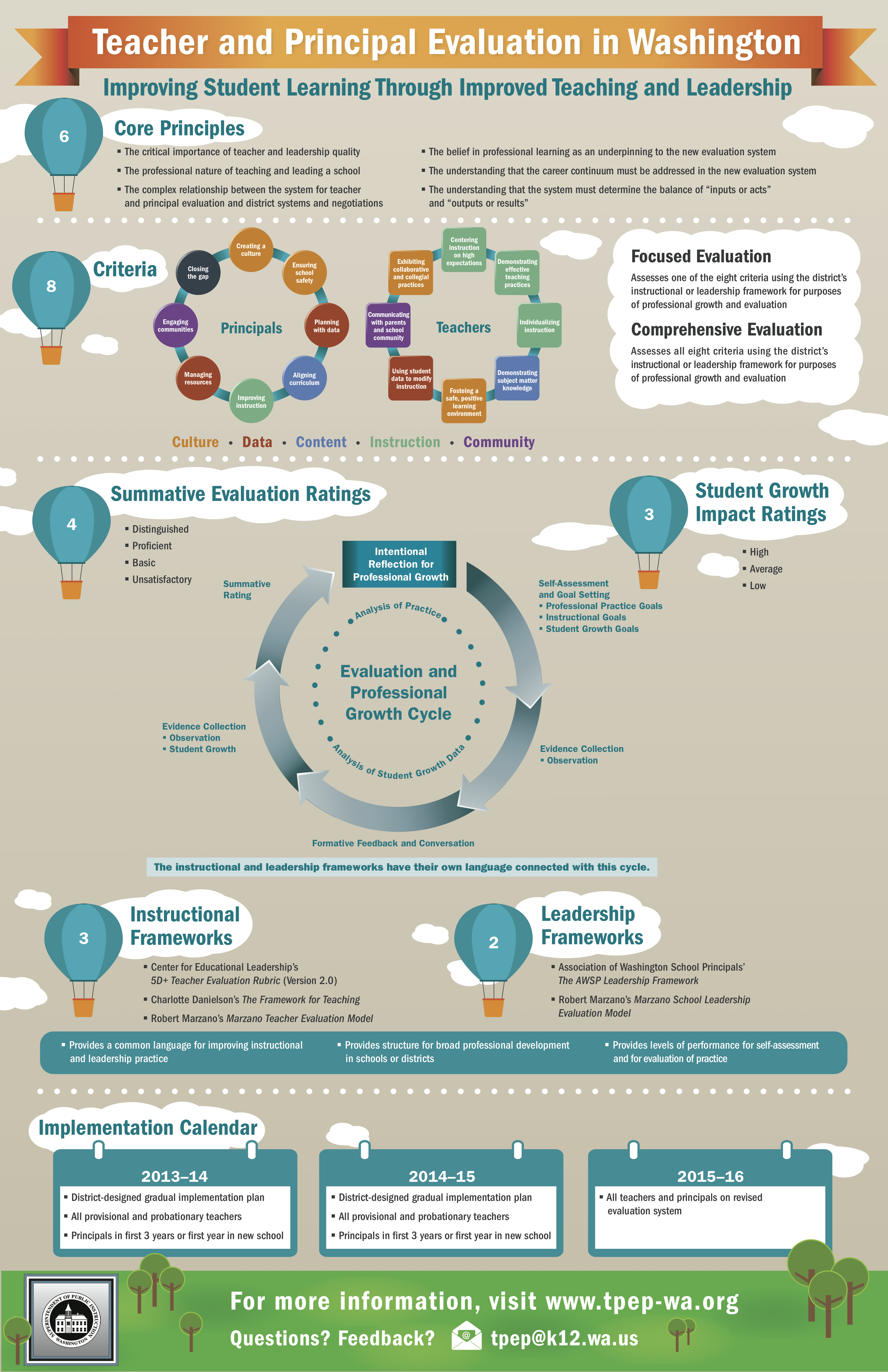The Teacher/Principal Evaluation Pilot was born out of Engrossed Second Substitute Senate Bill 6696 during the 2010 legislative session. The evaluation provisions in the bill were part of a larger reform effort made during Washington’s Race to the Top application. The bill created our pilot projection and moved the state from a two-tiered system of unsatisfactory to a four-tiered evaluation system. In addition to moving to a four-tiered system, the legislation created eight new criteria for teachers and principals to be evaluated upon, with common themes tying the criteria for teachers and principals together. E2SSB 6696 also created a TPEP Steering Committee made up of representatives from the following organizations:
- OSPI
- Governor’s office
- Washington Education Association
- Association of Washington School Principals
- Washington Association of School Administrators
- Washington State Parent Teacher Association
- Washington State School Directors’ Association (added in May 2011, added later through ESSB 5895)
Pilot Process
During the spring of 2010, over 50 districts applied to participate in the pilot. The TPEP Steering Committee and Superintendent Dorn reviewed all of the applications and made their choices based on a number of factors, including collaboration with locals associations representing teachers and principals. As part of the application, districts chosen to participate in the pilot agreed to a number of activities, including:
- development of criteria for the evaluations,
- identification of (or development of) appropriate and multiple measures of student growth,
- development of evaluation forms,
- submission of evaluation data and all district collected student achievement, aptitude, and growth data regardless of whether the data points are used in evaluations;
- and collaboration with other pilot districts, OSPI, and the Steering Committee.
Our eight pilot districts and eight-district consortium out of ESD 101 were awarded grants ranging from $100,000 to $180,000 and began their pilot work at our kick-off meeting in August 2010. The pilot sites spent countless hours over the course of the 2010-11 school year developing their evaluation systems for piloting in the 2011-12 school year.
RIGs: Increasing Involvement
In addition to our pilot sites implementing the models they’ve developed, OSPI expanded the reach of the TPEP program by offering Regional Implementation Grants (RIGs). The goal of the grants was to get one third of the state’s districts involved in the program in some capacity. Our 70 RIG districts have spent the year learning from the work of the pilots and preparing to implement a new system based on the pilot work for the 2012-13 school year. For the 2012-13 school year, we added 138 more RIG districts, bringing the total number of RIG districts working with the ESDs to learn and prepare for the new evaluation system to 208.
Built From the Ground Up
While many states have undertaken efforts to revise their evaluation systems, Washington’s unique grassroots approach has helped develop a system of evaluation focused on professional growth and student learning. From the work of the pilot sites and the efforts of the TPEP Task Force to the TPEP Educator Forums, the input and feedback of teachers, principals, administrators, and the school community has driven the project.
TPEP Core Principles
- Quality teaching and leading is critically important.
- Professional learning is a key component of an effective evaluation system.
- Teaching and leading is work done by a core team of professionals.
- Evaluation systems should reflect and address the career continuum.
- An evaluation system should consider and balance “inputs or acts” with “outputs or results.”
- Teacher and principal evaluation models should coexist within the complex relationship between district systems and negotiations.
Governor Gregoire’s Thoughts on TPEP
Before leaving office, Governor Chris Gregoire spoke about the pilot districts & participants, the process, and the system they helped develop.
